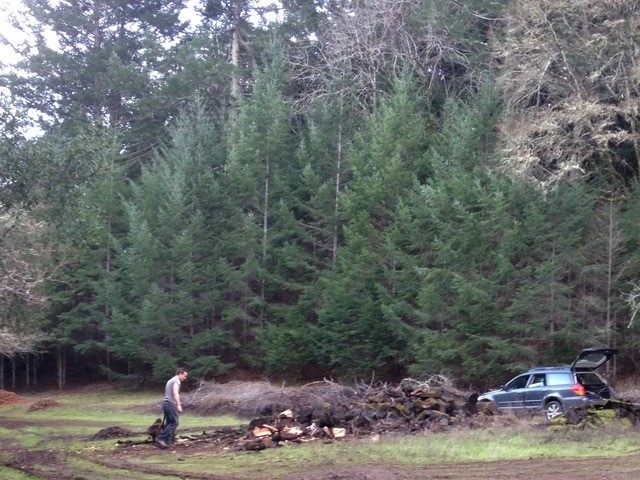California's Forest Practice Rules were created in 1973 with the goal of protecting public resources and emphasizing the importance of planning for sustainable resources management. For small, private forest landowners, preparation of a full Timber Harvest Plan (THP) can sometimes be much more than is needed to accomplish the goals and objectives for their timberland. According to David Haas, CAL FIRE San Bernardino Unit Forester and Forest Practice Inspector for San Bernardino, Inyo, & Mono Counties, in certain situations, using exemptions allows forest landowners to do a range of forest management activities in a more timely manner and without needing to prepare a THP.
Exemptions are intended to permit forest management to respond to or prevent disasters, and restoration efforts. They may or may not require a Registered Professional Forester (RPF) to develop and will have certain limitations associated with them such as acreage, tree cutting diameter limits and silviculture or stocking requirements. Exemptions are only valid for 1 year.
For small, private forest landowners, activities such reducing fuels within 150 foot of a home or harvesting of dead, dying or diseased trees, can all be undertaken using an exemption.
Q: What would be the first step a private forest landowner should take when considering the use of an exemption?
A: Review forest management activities listed on the Dead Tree Removal and Fuel Reduction Permit Exemption. This matrix lists the various requirements for each exemption. You can also contact your local CAL FIRE unit and speak to the Forest Practices Inspector. They can answer your questions and help you identify if you need an RPF moving forward.
Q: What are benefits to conducting forest management activities under an exemption?
A: It can save time and money.Forest management activities conducted under an exemption are exempt from Timber Harvest Plan preparation and submission, which can be a lengthy and expensive process. However, operational provisions of the Forest Practice Rules still apply.
Q: Are there other rules and regulations a landowner needs to follow when working under an exemption?
A: If you plan on selling, bartering, exchanging or trading any wood product, you are subject to the California Forest Practice Rules. Individual counties may also have local regulations that need to be followed. If work will be conducted around streams or other watercourses, or if work may impact an endangered species or endangered species habitat, contact the California Department of Fish and Wildlife and/or the applicable Regional Water Quality Control Board. Additionally, you will need to pay the appropriate yield tax on any income generated.
Q: Once I apply for an exemption, when can the work start?
A: In most instances, approval of an exemption takes five working days from the day the Forest Practice Review office received the notice. Under certain exemptions, work may start ten working days after the Forest Practice Review office receives of the notice.
Q: Do I need to hire a Licensed Timber Operator (LTO) to do work under an exemption?
A: If activities meet the definition of Timber Operations, as defined by the Forest Practice Rules, work must be completed by an LTO.
Q: Forest management activities under an exemption can still be expensive. Can cost-share programs help pay for this or is there other funding available?
A: Yes! Programs like CAL FIRE's California Forest Improvement Program (CFIP) and Natural Resource Conservation Service's Environmental Quality Incentives Program (EQIP) are intended to help small, private landowners pay for exactly these kinds of activities. Cost-share programs like CFIP and EQIP require development of a management plan as part of program participation. Discussions with your RPF, CFIP, and/or EQIP representatives should include the need for permitting documents, including exemptions. In most cases, a California Cooperative Forest Management Plan is needed to apply for cost share funds. Information for a permitting document can often be collected during the management plan development process.
For more information on forest management policy, regulations and planning, please see Forest Stewardship Series 19 Laws and Regulations Affecting Forests, Part I: Timber Harvestingand Frequently asked questions about managing forest lands in California.
